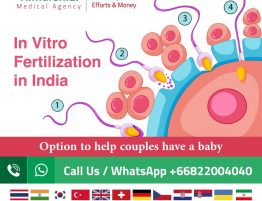
Aplastic Anemia is an autoimmune disease in which the body fails to produce blood cells in sufficient numbers. Blood cells are produced in the bone marrow by stem cells that reside there. Aplastic anemia causes a deficiency of all blood cell types: red blood cells, white blood cells, and platelets.
A rare and serious condition, aplastic anemia can develop at any age. It can occur suddenly, or it can come on slowly and worsen over time. It can be mild or severe.
Symptoms
– Aplastic anemia can have no symptoms. When present, signs and symptoms can include:
- Shortness of breath
- Frequents or prolonged infections
- Unexplained or easy bruising
- Skin rash
- Fatigue
- Pale skin
- Rapid or prolonged infections
- Fever
- Dizziness
- Skin rash
- Headache
- Prolonged bleeding from cuts
- Nosebleeds and bleeding gums
It is more frequent in people in their teens and twenties, but is also common among the elderly. It can be caused by heredity, immune disease, or exposure to chemicals, drugs, or radiation. However, in about one-half of the cases, the cause is unknown.
The definitive diagnosis is by bone marrow biopsy; normal bone marrow has 30-70% blood stem cells, but in aplastic anemia, these cells are mostly gone and replaced by fat.
Risk Factors
Aplastic anemia is rare. Factors that can increase risk include:
- Exposure to toxic chemicals
- Pregnancy (rarely)
- Certain blood diseases, autoimmune disorders and serious infections
- Treatment with high-dose radiation or chemotherapy for cancer
- The use of prescription drugs — such as chloramphenicol, which is used to treat bacterial infections, and gold compounds used to treat rheumatoid arthritis
Treatments
Treatment for aplastic anemia will depend on the severity of the condition and the age, might include observations, blood transfusions, medications, or bone marrow transplantation. Severe aplastic anemia, in which the blood cell counts are extremely low, is life-threatening and requires immediate hospitalization.
Blood transfusions – although not a cure for aplastic anemia, blood transfusions can control bleeding and relieve symptoms by providing blood cells the bone marrow is not producing.
Blood transfusions include
- Red blood cells – these raise red blood cell counts and help relieve anemia and fatigue.
- Platelets – helps in preventing excessive bleeding
Stem Cell Transplant – to rebuild bone marrow with stem cells from a donor might be the only successful treatment option for people with severe aplastic anemia.
Immunosuppressants – for people who can’t undergo a bone marrow transplant or for those whose aplastic anemia is due to an autoimmune disorder, treatment can involve drugs that alter or suppress the immune system.
Bone Marrow Stimulants – certain drugs — including colony-stimulating factors, such as sargramostim (Leukine), filgrastim (Neupogen) and pegfilgrastim (Neulasta), epoetin alfa (Epogen/Procrit), and eltrombopag (Promacta) — help stimulate the bone marrow to produce new blood cells. Growth factors are often used with immune-suppressing drugs.
Other treatments – aplastic anemia caused by radiation and chemotherapy treatment for cancer usually improves after the treatments stop. The same for most other drugs that induce aplastic anemia.
What We Offer
We at Almurshidi Medical Tourism will find the best doctors and hospitals that is most suitable for your needs! We are partnered with a wide network of hospitals and clinics that provide top quality medical experience.
We provide free medical estimates, make medical appointments, and provide several medical opinions if needed at no cost .
Contact Us
For more information contact us at +66822004040 or via WhatsApp





